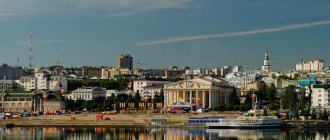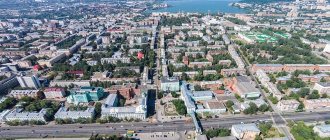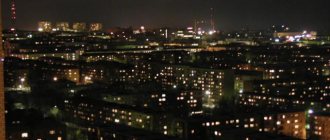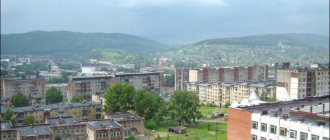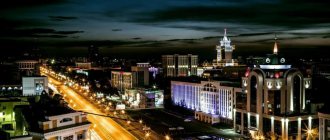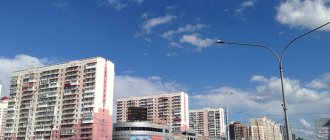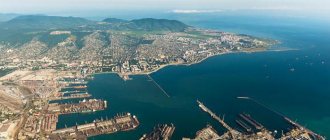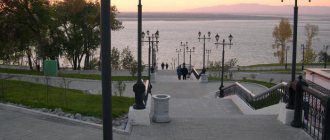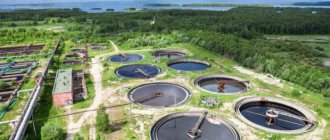Ilizarov Center Museum
Ilizarov Center Museum
Mound
The Ilizarov Center Museum is the first museum of traumatology and orthopedics in Russia. It was opened in Kurgan in 1993. The office of orthopedic surgeon Gavriil Ilizarov, who patented a device for merging and stretching bones, was recreated here. In the office you can see documents about the doctor’s inventions, video chronicles and photographs of surgical operations.
The museum has a makeshift laboratory and operating room where guests can fix the fake bones themselves. In the halls of the museum you are allowed to hold a real surgical drill and other instruments of traumatologists in your hands. On special screens, visitors are shown the structure of the human body. Such a program is called a multimedia anatomical atlas.
Museum guests are offered excursions around the park of the Ilizarov Center: in the recreational area there is a monument to the surgeon-inventor, historical installations “They Serve Science” and “Brumel’s Gate”. Meetings with famous Russian doctors are also held here.
What to see if you come with a child
The child will be interested in visiting the local Gulliver puppet theater. It began its work in the middle of the twentieth century, becoming one of the first such establishments in Russia. The performances here are quite diverse, based on both Russian and foreign fairy tales. There are performances for both very young spectators and adults.
Address: Sovetskaya street, house 104. Opening hours: daily, closed on Monday. Performances start: 11.00, 13.00 and 18.30. Ticket price: from 400 rubles.
There is also a Children's Railway for young travelers in Kurgan. The train departs from a special railway station, makes several stops, and passes through the central park, the banks of the Tobol River and the bridge. The length of the Children's Road is one and a half kilometers. The duties of a conductor, guide and assistant driver are performed by high school students.
Kurgan Children's Railway opened on August 13, 1989
Address: Kareltseva street, building 13. Opening hours: 10.00–21.00, Monday and Tuesday are days off. Cost of the trip: children - 50 rubles, adults - 100 rubles.
15 kilometers from Kurgan there is a small petting zoo “Forest Fairy Tale”, best known as the “Ostrich Farm”. Here the child will be able to look not only at ostriches - the main inhabitants of the farm, but also other animals, including: raccoons, rabbits, meerkats, peacocks, owls, ducks, piglets.
On the territory of the farm, you can have a great rest in nature by renting a cottage in a picturesque location
Address: Kurgan region, Ketovsky district, cottage village Roshchino. Opening hours: 10.00–19.00. Cost of visiting: children under 3 years old - free, children from 3 to 9 years old - 100 rubles, children from 10 years old and adults - 200 rubles.
Aviation Museum
Aviation Museum
Mound
The Kurgan Aviation Museum was founded in 1985. Here they talk about the history of aviation in the Trans-Ural region from 1912 to 2000. Among the exhibits are documents, photographs, awards and pilot uniforms.
In total, the exhibition of aviation equipment includes 15 aircraft, including various fighters: interceptors, bombers, attack aircraft. Also presented are models of aircraft on which employees of defense companies worked: Aviakhim, Osaviakhim, DOSAAF, ROSTO. In the fuselage of the Il-14T transport aircraft there is an exhibition of crew uniforms and equipment. During the sightseeing tour, visitors are told how the main types of aircraft are constructed and how experienced aviators fly the planes.
Population diversity
Since 2007, the birth rate in Kurgan and the region has increased and the mortality rate has decreased. Now more than 326,000 people live in the city, a third of which are children and still disabled youth. According to statistics, there are much fewer male residents than female residents - 149.5 and 184 thousand people, respectively.
Multinational population:
- Russians;
- Ukrainians;
- Belarusians;
- other nationalities and peoples.
Young people from Kurgan and nearby towns are patriotic, get an education and want to achieve a lot. Guys and girls have real views on the world, they freely choose their profession and lifestyle. The administration is committed to ensuring the healthy development of the population. In the Trans-Ural region, sports complexes and a children's and youth center have been built, and work is constantly carried out with students.
The labor exchange provides jobs to the population immediately after reaching adulthood. Although some teenagers can receive a salary on the same basis as their parents, making their contribution to the family budget. Interesting fact: emigration of the population has decreased recently - in 2010, 11 thousand residents left, and in 2015 - only 8,000.
House of Decembrist Rosen
House of Decembrist Rosen
Mound
The estate, which today houses the house of the Decembrist Rosen, was one of the largest in Kurgan. It was built at the end of the 18th century. Baron Andrei von Rosen lived here with his family from 1832 to 1838. The estate consisted of a house with a mezzanine, a bathhouse and laundry, a stable and a barn. Rosen himself planted flower beds in the garden, planted ornamental and fruit crops, and then distributed seedlings and seeds to the townspeople.
The poet Vasily Zhukovsky, as well as former Decembrist convicts, stayed in Rosen’s house. In 1838, the baron left to serve in the Caucasus, and for some time exiled participants in the Polish uprising lived here. After 30 years, the estate came into city ownership. Over the years, a hospital and a parish school, a public meeting and other institutions were located here.
In 1914, a room with a stage was added to the house, which has survived to this day. During Soviet times, the house was occupied by the troupe of the Operetta Theater, and later by the library and the city council. Today, students from a children's art school study here.
How to get to Kurgan from Moscow and St. Petersburg
The distance between Kurgan and the Russian capital is about two thousand kilometers, and the duration of travel between the two cities by car is about 40 hours, if you drive without long breaks and choose between three highways - the M7 road (Volga), the M5 highway (Ural) ) and the federal route E22.
Moscow and Kurgan are not connected by direct train routes, but you can also get to your destination by passing train going to Pavlodar, Petropavlovsk, Karaganda, Leninogorsk and Balkhash.
Also, the Russian capital and St. Petersburg are connected with Kurgan by almost daily flights of major airlines.
The distance between Kurgan and the northern capital is over two and a half thousand kilometers, and the duration of the trip will be about 42 hours if the journey is not interrupted for a long time. You can travel in three ways – along the A114 highway, the M10 road and the M7 (“Volga”) highway.
Both cities are also connected by two direct trains with numbers 145 and 040. You can also get to Kurgan from the northern capital by passing train to Petropavlovsk.
Kurgan Regional Museum of Local Lore
Kurgan Regional Museum of Local Lore
Mound
Kurgan Museum of Local Lore is the first and largest museum in the region. The collection began to be assembled back in 1920. After 30 years, the exhibits were placed in the former Church of St. Alexander Nevsky. The exhibition included artifacts found during the excavations of Tsarev Settlement—that’s how the Kurgan was called before 1738. Among them are stone sacrificial slabs, a military belt set and tools.
In 1975, a branch was opened at the museum - the House-Museum of the Decembrists. It is located in a building built at the end of the 18th century, where the Decembrist Mikhail Naryshkin and his family lived from 1833 to 1837. Later, all the exiled Decembrists met in this house. During the restoration in 1972, the owners’ rooms, living room, dining room and library were restored according to letters from Naryshkin’s wife. Here you can see furniture made of mahogany and Karelian birch, as well as antique interior items.
The local history museum also includes the House-Museum of V.K. Kuchelbecker. It was opened on the site where the Decembrist Wilhelm Kuchelbecker lived from September 1845 to March 1846. The house was completely restored according to the model of that time.
In 2006, another branch of the local history museum opened - the Museum of City History. Its exhibition is located in a merchant mansion, where outbuildings and a house in the style of Russian classicism have been preserved. In the museum you can learn how Kurgan developed - from the founding of the settlement until 1917. Visitors are told about the significance of the district town in the history of Siberia.
Religious composition
Mighty Russia combines many religious movements. Kurgan, as a typical Russian city, is also replete with religious movements. Old Believers, Catholics, Protestants, Islamists, and Christians live here. There are some fans of Judaism, but these people are very few. There are many churches, temples, and even its own Muslim mosque. The number of Orthodox churches in the city is about 10, and there is a special prayer house for Old Believers. There are also places for worshiping the Lord, adapted for Baptists and Adventists.
Kurgan Regional Art Museum
Kurgan Regional Art Museum named after. G.A...
Mound
Kurgan Art Museum was founded in 1982. Paintings by Russian painters of the 20th and early 21st centuries are stored here: Yulia Razumovskaya and Grigory Shegal, Leonard Turzhansky and Pyotr Konchalovsky, Nikolai Dormidontov, Alexander Deineka. The museum displays the largest collection of watercolors in Russia - more than 1,500 sheets by Arthur Fonvizin, Lev Bruni, Vasily Zvontsov and other artists.
In the arts and crafts section, visitors can see works of traditional crafts of Russia and artistic crafts of the Trans-Ural region - weaving, embroidery, ceramic and glass products, cast iron objects made using the Kasli casting technique. Also here are exhibits of Russian culture of the 18th - early 20th centuries: icons, early printed and handwritten books, engravings.
Visitors are invited to take a walk along the tourist routes: “Art Museum and City Museums” and “Art Museum and Historical Part of the City”. In addition, the museum often organizes traveling exhibitions. One of them, “Kurgan Artists,” talks about the visual traditions of the Trans-Urals.
Travel tips
Kurgan is worth visiting in the warm season - from May to September. Although in mid-summer it is quite hot here, so tourists who do not like heat should come in May or early autumn. In winter, the city is quite cold and windy.
You can explore the main attractions of Kurgan in one or two days. All of them are located in the central part of the city, so the excursion will be quite compact. In addition, most hotels are also located in close proximity to the city center, so you can move around Kurgan on foot. Public transport here is not very developed - it is represented only by minibuses, however, they can easily take you anywhere in the city.
You can buy locally produced birch bark products in souvenir shops in the city.
There are no special souvenir products in Kurgan. Most often, travelers purchase birch bark products as gifts for loved ones. The choice is quite large, you can find everything from magnets to flasks.
Kurgan State Drama Theater
Kurgan Drama Theater
Mound
The history of the Kurgan Drama Theater began in 1943. The first rehearsals took place on the stage of a theater in the neighboring city of Shadrinsk. The artistic directors were Konstantin Stepanov-Kolosov and Alexander Kanin. Later, the troupe moved to Kurgan, where they were given the building of the former Alexander Girls' Gymnasium. In the spring of 1953, the regional theater moved to the former People's House, which was specially restored for artists.
For the opening of the new building, the actors prepared the play “Jackals” based on the play by Anatoly Yakobson. From 1956 to 1965, the theater was led by Honored Artist of the RSFSR Lazar Meyerson. The audience's favorite productions were his “Egor Bulychev and Others,” “Khanuma” and “Ermak.” Famous actors also came here to play: Georgy Menglet and Yuri Yakovlev, Andrei Mironov and Vera Vasilyeva, Yuri Solomin and Andrei Myagkov.
Today, the Kurgan Drama Theater is reviving the forgotten traditions of Russian provincial theater. On its stage you can see actors' benefit performances, comedies, musicals and productions by modern directors: Victor Antipin, Alexander Gorban, Daniil Beznosov, Dmitry Akrish and others.
Climatic conditions
The climate in Kurgan is continental, but heat lovers will find it uncomfortable here. The region has short summers and harsh winters. Snowfalls continue for six months, the average temperature in winter drops to -20 degrees, and on especially cold days it reaches -40. In summer it is no higher than +20, sharp changes are observed. After prolonged heat, severe cold snaps may occur, and vice versa.
There is a wind season in Kurgan , starting in March and lasting almost two months. Due to the unfortunate geographical position, the air stagnates over the area; even eastern currents cannot clear it. Although the city is surrounded by coniferous and birch forests, the atmosphere in it is almost three times dirtier than in neighboring areas.
Most enterprises have switched to natural gas, so they emit fewer harmful substances into the air. There are few roads in the region, their traffic capacity is low, and there are quite a lot of cars.
There are many environmental problems in Kurgan. The Tobol has long become a sewer, and the Black River is also polluted. Local residents scatter garbage on beaches and lakes; spring cleanup days do not allow them to be completely removed.
The environment is deteriorating not only because of the factories; the district administration and city government practically do not care about the cleanliness of the area.
Workplaces
The machine-building industry is developed in Kurgan. The factories produce URAL, KAMAZ, ZIL, GAZ trucks, and BMP military vehicles. They also produce buses and heavy equipment.
Residents of the city and region receive jobs at various enterprises:
- Kurganpribor;
- Electromechanical Plant;
- Kurganselmash;
- trade and "Crimea";
- stores “Central Grocery Store”, “Zarya”, “Zvezdny”;
- Shopping centers "HyperCity" and "Pushkinsky".
Factories are constantly short of mechanics and turners, so professionals with technical specialties are valued in Kurgan. Women are most often employed in trade and entertainment centers. There are nine supermarkets and more than 30 shopping centers with children's playrooms, cafes, and bowling alleys for city residents.
Popular message topics
- Hornbeam tree
Hornbeam is a deciduous tree from the birch family. The tree's height can reach 30-40 meters, its lifespan can be up to 250 years, and its diameter can be about 2 meters. There are about 40 varieties of this tree, - Buddhism
Buddhism is one of the most ancient religions in the whole world. In its fame and veneration, Buddhism is on a par with Islam and Christianity. Buddhism denies the presence of a deity or God himself. In Christianity and Islam, it is the other way around. - Magnifying devices (history of origin)
Humanity simply had to invent magnifying devices, since without them it is impossible to penetrate into the world, to see what no one has seen.

